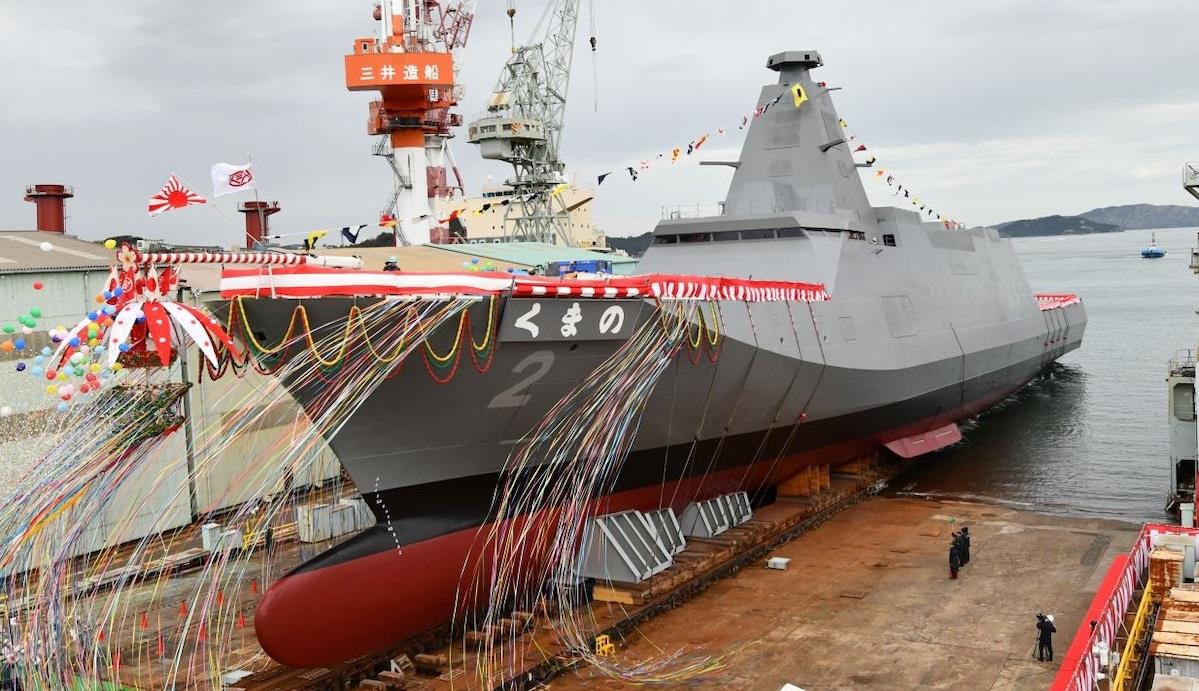(MENAFN- Asia Times)
Japan unveiled plans to develop its own hypersonic weapons back in March 2020, joining the club of states that have such technology, including the US, Russia, China, India, Australia, France, Germany, and North Korea. Those plans are taking on new strategic significance amid signs Tokyo may amend its pacifist constitution to allow for more offensive military capabilities.
Japan plans to field two types of hypersonic weapons, the Hypersonic cruise Missile (HCM) and Hyper Velocity Gliding Projectile (HVGP). The HCM functions like a conventional cruise missile and can be armed with an armor-piercing warhead designed to penetrate the deck of an aircraft carrier, or an explosively formed penetrator (EFP) warhead for land attack.
In comparison, the HVGP utilizes a solid-fuel rocket engine to boost its warhead to high altitudes before separating, where it can glide to the target at hypersonic speeds. It also can be armed with multiple EFPs for area saturation attacks.
Further, in December 2020, Japan revealed its plans for its own domestic sixth-generation stealth fighter jet, dubbed the F-X. Japan plans to manufacture about 90 jets with a project cost of US$48 billion. Mitsubishi Heavy Industries has been designated as the main contractor, with US defense contractor Lockheed Martin providing technological support.
Other Japanese companies such as IHI Corporation, Subaru and Fujitsu are also involved in the project.
The F-X will feature drone remote control technology, a dual-purpose radar that can be used as a microwave weapon, VR helmet-mounted display, sensor data exchange capability with US and Japanese forces and is optimized for air superiority missions while still being capable of performing air-to-ground and anti-ship roles.

The F-X is a sixth-generation stealth fighter in development for Japan and the nation's first domestically developed stealth fighter jet. Credit: Japanese Ministry of Defense.
Japan's hypersonic weapons program is aimed in particular at defending the Nansei Islands in view of bubbling maritime disputes with China. In addition, Japan's F-X is designed as a response to China's J-20 and J-XY and Russia's Su-57 and Checkmate stealth fighters.
The design nature of stealth fighters and hypersonic weapons to penetrate defended enemy territory puts them at odds with Japan's longstanding pacifist defense policy, which places restraints on the country's offensive military capabilities. These developments thus may be interpreted as part of Japan's efforts to achieve strategic independence.
Chinese academic Wu Huaizhong notes that Japan's pursuit of strategic independence is distinguished as being“independently designed and self-contained.” This implies the“normalization of the state”, and not breaking away from the post-World War II order.
To achieve this, Japan aims to remove internal constraints in defense and security, develop offensive military capabilities and promote multilateral regional diplomacy to form a network of partners outside the US-Japan alliance. The changes Japan seeks do not aim to change strategic-level constraints but are focused on the tactical level.
As such, Japan's hypersonic weapons program boosts Japan's latent nuclear power status as an alternative to the US as a strategic deterrent. While Japan has renounced nuclear weapons, it has the resources, technology and skills to assemble such weapons on short notice.
Japan could thus mount nuclear warheads on its hypersonic weapons to field its own nuclear deterrent , should it decide for whatever reason that US security guarantees are inadequate or unnecessary.
However, the economic and security benefits Japan currently receives from its US ally are strong arguments against acquiring nuclear weapons. But rising nationalism and increasing threats from China, Russia, and North Korea could eventually push Japan towards the nuclear option.
Japan could also choose to export its hypersonic weapons and stealth fighter to form a defense logistics network with itself at the center, as part of its multilateral diplomacy.

The 30FFM Mogami-class frigate. Photo: Twitter
In that direction, on March 30 this year, Japan and Indonesia signed a defense deal focusing on arms transfers and defense industry collaboration. A potential joint project under this deal is Japan's 30FFM Mogami-class frigate, which Indonesia plans to operate as well.
At the same time, Japan can present collaboration in its F-X stealth fighter as an alternative to Indonesia's financially troubled partnership with South Korea over the KF-21 Boramae stealth fighter.
Apart from Indonesia, Japan could also choose to open collaboration over the F-X stealth fighter to other states seeking such aircraft, notably India , which has just started its own stealth fighter program.
MENAFN23122021000159011032ID1103434126
Legal Disclaimer:
MENAFN provides the information “as is” without warranty of any kind. We do not accept any responsibility or liability for the accuracy, content, images, videos, licenses, completeness, legality, or reliability of the information contained in this article. If you have any complaints or copyright issues related to this article, kindly contact the provider above.